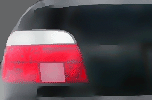


Site Directory
Features
Home
Unique Mods:
- Stealth
V1 Install
- E36
M3 Shifter
- LED
Interior Lights
- Cold
Air Intake
- $2.99
Heat Shield
-
Rear Decal Mount
- Shadowline
Install
- Armrest
Swap
- Clutch
Stop
- Trunk
Handle
- V.60
Phone
All
Mods
"They
all do that..."
(Problems/Fixes)
"RTFM"
(Reference Materials)
Visit
the New BMW
Owner's Self Service Center
Cool
Tools
Pictures
Links
Contact
me at:
mike@540i6.com
New!
Bentley 5 Series
Service Manuals!

Search ebay:
LED Interior Lights
I was tired of being blinded by the main interior lights, so I replaced them with LED-based equivalents.
Why?
- Provides some light in the car without killing my night vision.
- No more of the too-bright lights when you open the doors at night.
- The pattern of light from LEDs is more directional and permits the light to be concentrated where desired with less stray light.
- They never need replacement.
- Matches the stock BMW-orange instrument lighting perfectly. : )
You now can buy these preassembled from a number of sources, but they are relatively expensive at about $15 - $20 each versus about $4 in parts. Also, all of those that I've seen are not as bright or as well patterned as the LED that I used.
NOTE: LEDs must be installed with correct polarity; otherwise, either they simply won't work or you may ruin them.
References
See the following sites for more detailed info regarding LEDs, how to build simple LED circuits, and sources for parts.
General Info:
The LED Museum - a good site for lots of general information regarding LEDs - they "put the die back in diode" ; )
http://ledmuseum.home.att.net
How to build a simple LED circuit:
http://ledmuseum.home.att.net/reserved.htm#q1How to calculate proper resistance in a simple circuit to correctly match LED power levels:
http://www.7volts.com/led_resistor.htm
Parts:
Hosfelt Electronics, Inc.:
http://www.hosfelt.comThe LED that I used is a ~605-620 nm orange LED, 18,000-36,000 mcd, 10mm, Toshiba TLOH190P, Hosfelt part # 25-276 @ $ 3.49 each.
Pre-Assembled Lights:
For pre-assembled interior lights much better than those here, or other custom electronics involving LEDs, see David's site at www.tunerdomes.com. Excellent assembly quality and very good light output. Includes installation instructions.
LED Light Assembly
The picture below shows the components used including: the LED above, a 250 Ohm resistor, a small piece of circuit board sized to the length of the standard bulb, and the metal end caps from a standard interior bulb.
LED Light ComponentsYou can adjust the brightness and pattern of light by using different components. The LED I used is the brightest that I could find that matched the interior light color.
The 250 Ohm resistor is a little high for this LED.
The LEDs are 2 volt DC @ 60 mA.
Using the formulas above:
Assuming 14 volts (while the car is running), the best match for a resistor would be 200 Ohm.
Assuming 12 volts, the best match would be 166 Ohm.Anything between these values should be OK. Less resistance will increase the brightness of the LED.
Assembly is very simple. The resistor is wired in-line to the positive terminal of the LED. The end caps are simply soldered to the wrapped end of the resistor at one end and the negative lead (usually the shorter lead) of the LED at the other end.

Assembled componentsThe end result is a relatively bright, directional light that's almost perfectly matched to the stock orange dash lights.
I replaced only the center overhead light above the rearview mirror and the two passenger lights at each side in the rear. The light setup in the E39 is nice in that you have the stock map lights to either side of the center light for brighter white light when you want it in the front, the rear white reading lights are independent and can be turned on separately if wanted, and the standard white floor lighting provides indirect light down low.
The pictures below are attempts to show the result.

Front

RearIt's difficult to capture the effect of the lighting. The light from the LED tends to overwhelm the camera and you can't really see how well it lights the interior. In any case, it gives an idea of the brightness and color. I'd describe it as "night light bright." I know that some others have added additional LEDs to increase the amount of light.
The pattern of light from the particular LED that I used is relatively narrow. You can aim the beam somewhat by rotating the LED in the socket. I have the the light concentrated on the center console in the front and at each of the seat pads in the rear.
The lights all function as normal, other than they fade a little faster than the normal lights when the automatic cut-off turns them down.
|
|
|
|
Copyright
© 2002 by M. Andrews. All Rights Reserved.
The information presented on this site describes modifications that
I have made to my car.
Should you choose to attempt any similar modifications, you do so at
your own risk.
This site is not affiliated in any way with BMW NA or BMW AG.
All trademarks, servicemarks, and copyrighted materials that may appear
on this site
are the property of their respective owners.


